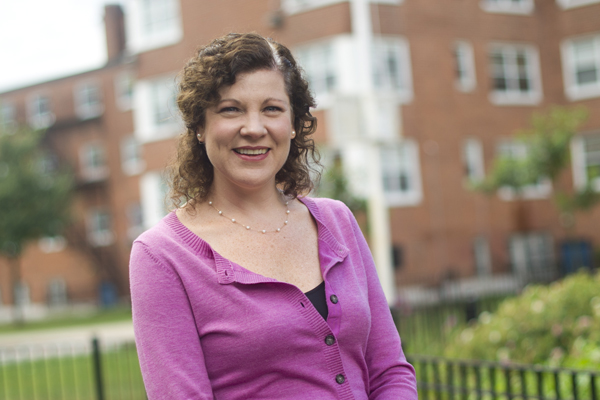Adolescents need tailored social services packages to succeed

Adolescents from high-poverty neighborhoods tend to face many mental-health challenges, but the solution lies not in finding another place to live, according to published research by a Northeastern University professor and her colleagues.
Theresa Osypuk, an assistant professor in the Department of Health Sciences in the Bouvé College of Health Sciences, and an interdisciplinary team of researchers and clinicians recently published their findings in Pediatrics and Archives of General Psychiatry, two professional peer-reviewed journals.
They found that adolescents who have pre-existing health conditions or had been exposed to a violent crime while living in public housing did not benefit from moving into private-market rental properties. In some cases, their mental health grew worse.
The researchers analyzed data from a program sponsored by the United States Department of Housing and Urban Development called Moving to Opportunity. Under the program, Osypuk explained, families from the nation’s most impoverished neighborhoods were offered vouchers to move out of public housing and into private-market rental properties. Adolescent participants of the program, as well as a control group that did not receive vouchers, reported on their mental health four to seven years after moving.
While other researchers have previously analyzed the same data, Osypuk’s team used more robust analytical methods to tease out new information that may end up being used to help shape policy reform.
In particular, the researchers found that girls with health problems and those in families that experienced a violent crime in the six months prior to moving did not experience a change in mental health after relocating; girls without a recent history of violence or health concerns benefited from the move. Boys, on the other hand, never benefited from the move and those with health problems or whose families had recently been exposed to violence experienced a decline in mental health.
Osypuk’s team and other researchers have attributed the gender discrepancy to the unique challenges facing boys and girls. “Girls may be escaping sexual harassment and threats of sexual violence when they move away from public housing into lower poverty neighborhoods,” said Osypuk.
On the other hand, the social relationships that boys form in their neighborhoods may play a crucial role in their mental health, and moving may cause those relationships to suffer. Additionally, the strategies boys use to navigate the social structure of a high-poverty neighborhood may be unhelpful or even detrimental in more affluent areas.
The findings suggest that there is no single solution for helping impoverished youth. “Our results point to the importance of tailoring social services for the specific needs of families, and providing social services across more than one sector,” said Osypuk.
She suggested that at-risk adolescents with a recent history of violence would benefit from receiving mental-health counseling, or information on specialized school programs. As Osypuk put it, “We can’t just provide housing vouchers to these kids who are very vulnerable on various different dimensions.”
It may seem obvious that individuals with different experiences will respond to interventions in different ways, but Osypuk hopes that her study will establish the significance of finding an interdisciplinary solution to reducing the effects of neighborhood poverty on our nation’s youth.
“The public tends to think that healthcare is the main predictor of health,” she said. But other factors, she added, such as income, education and housing, are also social determinants of health.





